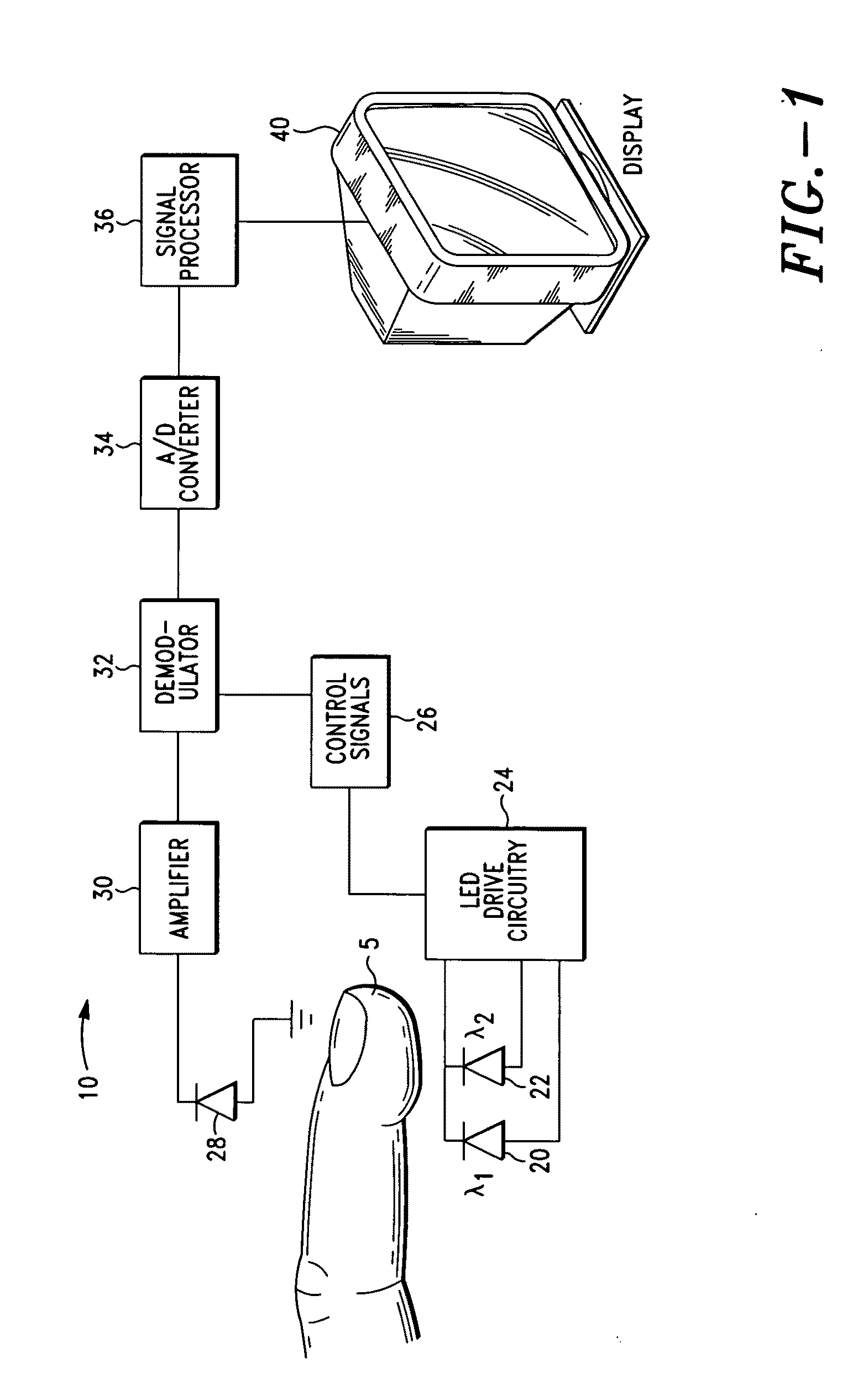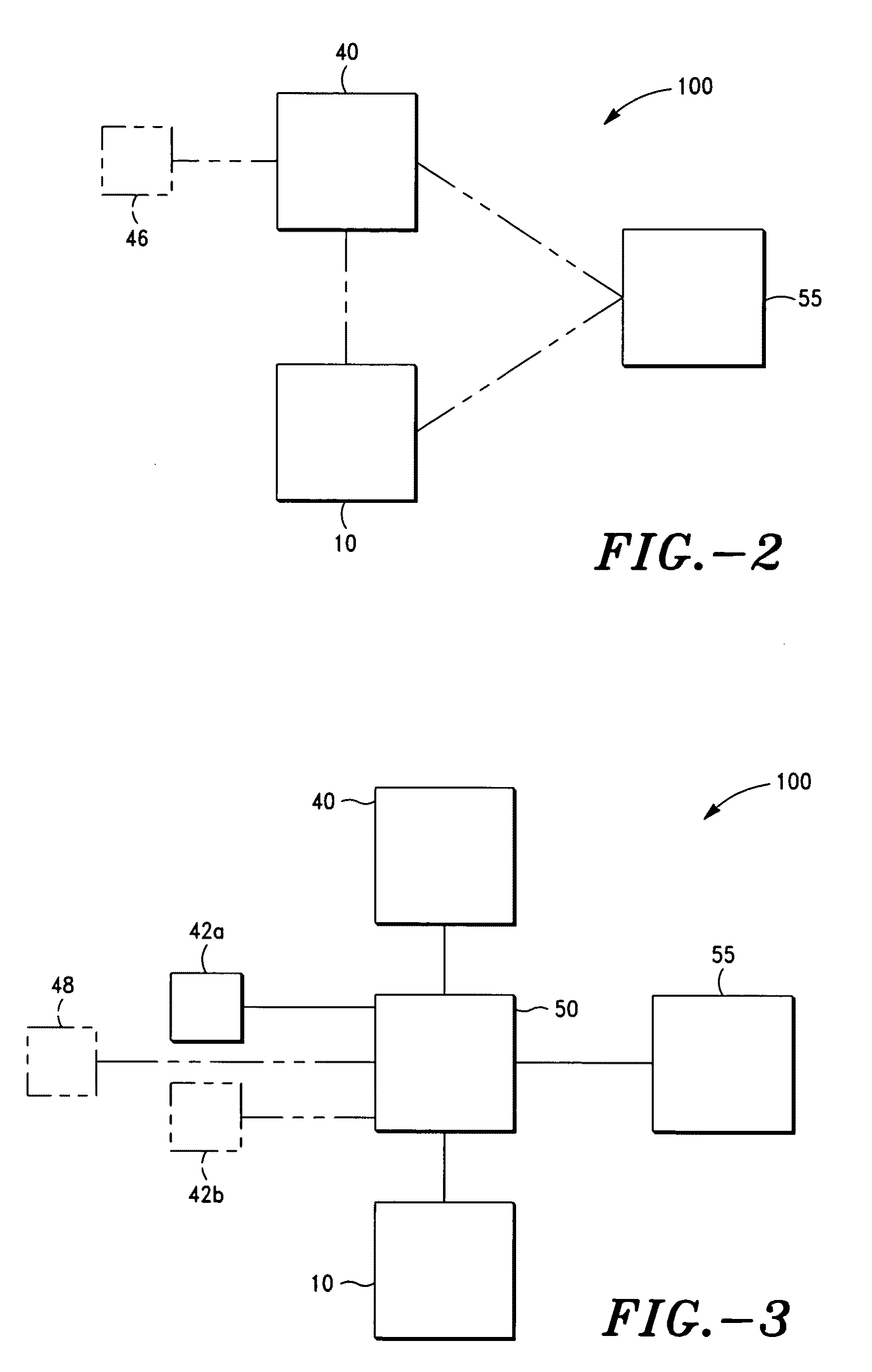Integrated physiological sensor apparatus and system
a sensor and physiological technology, applied in the field of physiological sensors, can solve the problems of limited range, limited application range, and limited accuracy of physiological measurements and determinations, and achieve the effect of enhancing the accuracy of physiological measurements
- Summary
- Abstract
- Description
- Claims
- Application Information
AI Technical Summary
Benefits of technology
Problems solved by technology
Method used
Image
Examples
example 1
[0159]A series of blood oximetry readings were obtained from thirty-three (33) subjects that ranged in age from 28 to 92 years of age. Baseline temperature and plethysmographic readings were initially recorded. The baseline temperature for each subject was obtained on an area of the ear proximate the sensor using a remote IR skin temperature monitoring device. Baseline plethysmographic recordings were obtained with a non-heatable Nellcor Ear Sensor®, model ES-3212-9.
[0160]Referring now to FIGS. 19-21, there are shown the IR portions of oximetry plethysmograms obtained on an area of the ear at a baseline temperature in the range of approximately 29-32° C. (FIG. 19) and at an elevated temperature in the range of approximately 35-37° C. for two subjects (FIGS. 20 and 21). It can be seen that the signal-to-noise ratio of the sensor is substantially improved in FIGS. 19 and 20 (i.e. elevated temperature), as evidenced by the absence of the spikes associated with the pulse waves at the ba...
PUM
 Login to View More
Login to View More Abstract
Description
Claims
Application Information
 Login to View More
Login to View More - R&D
- Intellectual Property
- Life Sciences
- Materials
- Tech Scout
- Unparalleled Data Quality
- Higher Quality Content
- 60% Fewer Hallucinations
Browse by: Latest US Patents, China's latest patents, Technical Efficacy Thesaurus, Application Domain, Technology Topic, Popular Technical Reports.
© 2025 PatSnap. All rights reserved.Legal|Privacy policy|Modern Slavery Act Transparency Statement|Sitemap|About US| Contact US: help@patsnap.com



